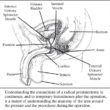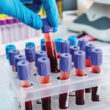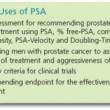Artificial Intelligence-Enhanced MRI
Multiparametric Magnetic Resonance Imaging (mpMRI) improves the pathway for diagnosing prostate cancer and detecting the clinically significant form of this disease. Moreover, some with a negative MRI scan can avoid prostate biopsy. In routine clinical practice, the PI-RADS scoring system ranges from 1 to 5, where “regions of interest” scored 1 and 2 are generally not cancer, 4 and 5 are generally clinically significant cancer, and 3 is “indeterminate.” Many prostate cancers eligible for active surveillance are small and low grade, making them less likely to be visible on MRI.1
Radiologists are now applying artificial intelligence (AI) technologies to MRI scanning; however, the optimal implementation of MRI in AS remains unclear. Whether MRI can permit the safe omission of repeat biopsy is also unclear. In one study, even with expert
radiologists, the ability to predict the absence of cancer was only 76% to 83%.2 These concerns are magnified in the context of MRI use in broader practice settings where it is difficult to standardize across radiologists, particularly non-specialists. Thus, how MRI performs in community practice remains an open question, particularly in the context of active surveillance.
In one recent research effort, PI- CAI, researchers posted thousands of MRI exams with biopsy outcomes in the public domain and held an open challenge to AI teams worldwide.3 They merged the top 55 submissions into an open-source algorithm that was “not inferior” to the results achieved by a group of 62 independent, experienced human radiologists and, in some respects, was superior. Another MRI approach uses a Restriction Spectrum Imaging (RSI) framework, which was better than the standard PIRADS scoring system at predicting tumor upgrading in men on active surveillance.4 A refined version called RSIrs, using data from 7 imaging centers, showed that the maximum RSIrs within a patient’s prostate is as predictive of clinically significant prostate cancer as the expert-defined PI-RADS.5,6
1. Turkbey B et al Eur Urol 2019; 76:340-51
2. Chu CE et al Eur Urol 2020; 0.1016/j.eururo.2020.06.030
3. Saha A et al Lancet Oncol 2024; 25:879-887
4. Beastie BD et al J Urol 2021; 206:44-51
5. Zhong AY et al Eur Urol Open Sci 2022; 47:20-28
6. Lui AJ et al Int J Radiot Oncol Biol Phys 2023; 117:1145-52











